Central Volcanic Cordillera Biosphere Reserve
Central Volcanic Cordillera Biosphere Reserve
La Selva Biological Station
Environmental Education Center (La Flaminia Annex)
Puerto Viejo, Costa Rica
The purpose of the La Flaminia Annex is to develop educational and technical support to promote the sustainability of Atlantic Tropical Wet Forests in Costa Rica as well as to create an interface between the biological station and the community. This is accomplished through the development of a complete public access visitor center, observation tower, picnic and active play area and an interpretive wetlands loop. Water around the loop will act as a natural element to prevent unrestricted access to the rest of the site.
Second, visitors can chose to engage the site more fully and take a guided walk to the river, the research plots, the archeological displays and successional plots.
Third, a restricted number of guests with reservations could participate in carefully guided tours of the primary forest. Fourth, researchers and ecotourist with reservation could spend the night and utilize the extensive resources of the Central Volcanic Cordillera Biosphere Reserve, utilizing the proposed La Flaminia entrance as a gateway to the research core. These different levels of access develop a filter, which facilitate the smooth running of the research core of the reserve.
In developing the Master Plan for the La Flaminia Annex of La Selva Biological Station several design challenges were present. The first challenge was inviting people into the station while buffering daily research operations. The second challenge was to work with a design language that was understandable at all levels as well as sensitive to regional culture. Another challenge was integrating the diverse usership allowing for a wider range of user backgrounds. Lastly, developing a design which fulfilled the program needs while visually and intellectually engaging the user.
The Site
The first photograph is an aerial photograph of the region and the site. The following three photographs show specific vegetative characteristics of the site as well as the riparian zone. I performed the site surveying and baseline information gathering in the field.
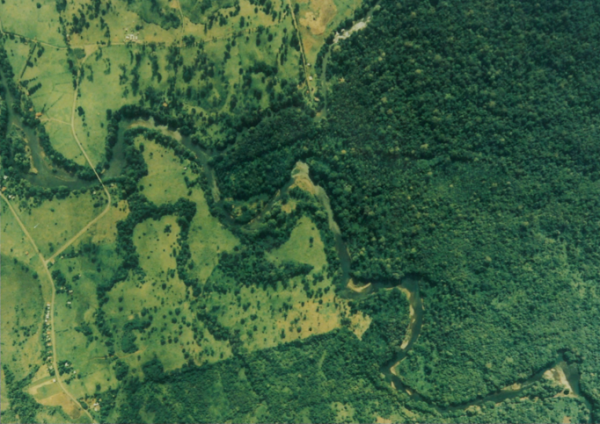
The Plan
The proposed master plan will act as an interface between the built communities surrounding the reserve and the natural environment of the reserve. Rectilinear shapes integrated into the curvilinear circulation system help to develop a transition between the agricultural landscape surrounding the reserve and the apparent natural environment within the reserve. The plan is zoned to allow for multiple levels of access.
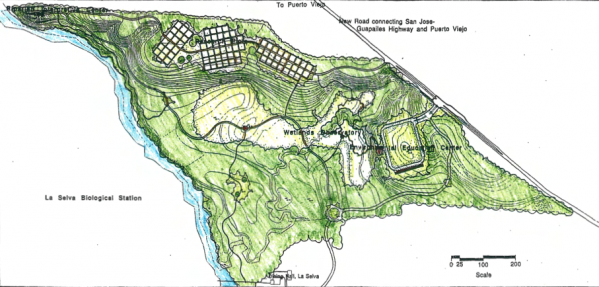
The environmental education center, wetlands observatory, the picnic grove, observation tower and the La Selva Green are of unlimited public access during the daylight hours. The close proximity of major site developments to the new highway was decided for several reasons. The first reason was ease of access. The second reason was to minimize paving within the site. The third reason was to minimize disturbance within the riparian zone.
Environmental Education Center
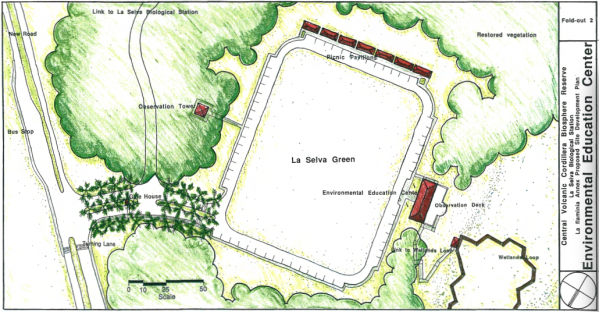
The environmental education center is situated prominently on the La Selva Green. The concept for the La Selva Green was designed based on local development patterns. Areas of new development would often occur around the abandoned log patios. Later, the log patio would function as a town green and recreational area, primarily soccer fields.
Wetlands Observatory
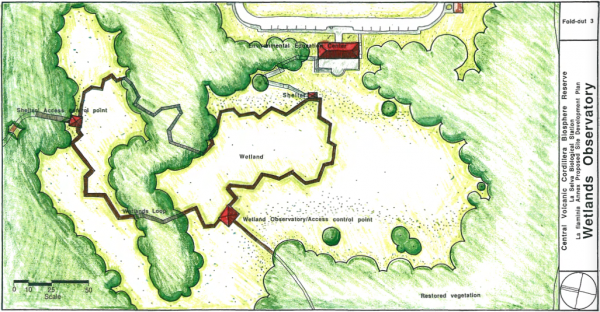
The Wetlands Observatory showcases the importance and fragile nature of the regions freshwater wetlands. Integrated into the Observatory is a system of catwalks.
Riparian Interpretive Center
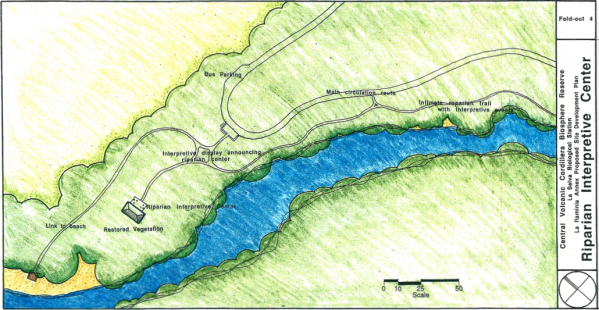
The Riparian Interpretive Center is designed to be part of the guided tour of the facility. The site was chosen due to the presence of an existing structure, its proximity to the river and its high elevation which will prevent flooding during seasonal high water. The interpretive program within the river center will promote watershed management including soil erosion, site stabilization, riparian ecology and the social and economic implications of watershed management.
Research Plots
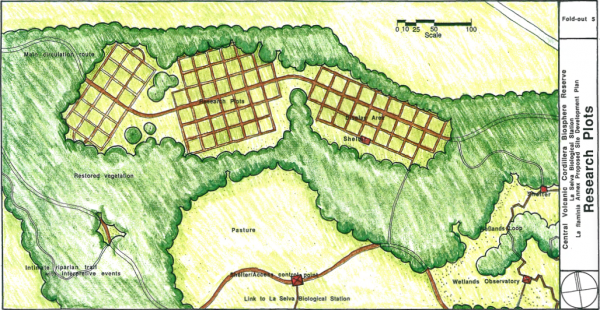
The Research Plots are intended to facilitate the transfer of technology from the reserve to the community. Integrated into the design of the research plots is all weather vehicular access.
